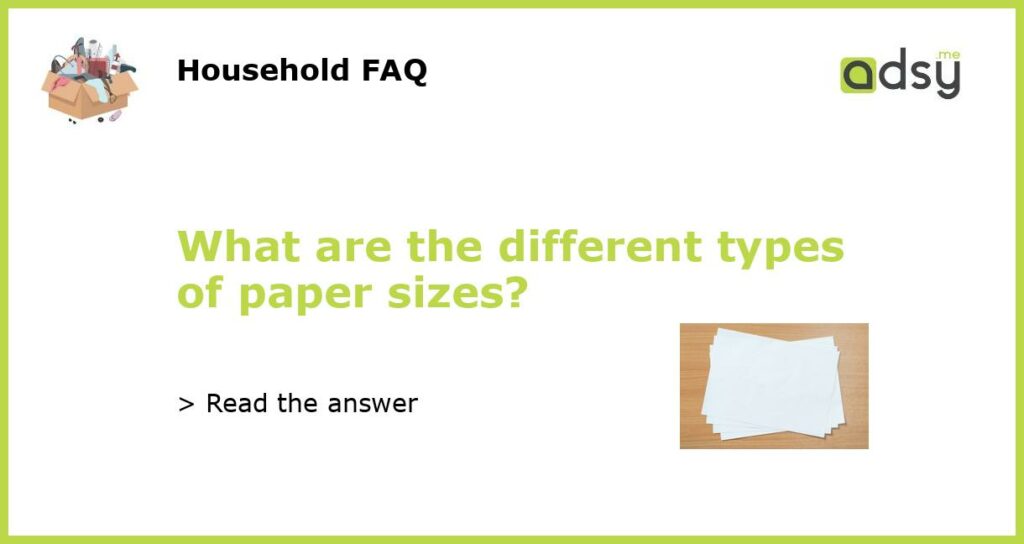Paper sizes are an essential factor to consider when it comes to printing and design. From standard industry sizes to specialized dimensions, understanding the different types of paper sizes is crucial for producing high-quality prints and designs. In this article, we will explore the most common paper sizes used around the world and their specific applications.
ISO Paper Sizes
The International Organization for Standardization (ISO) has established a set of paper sizes commonly used worldwide. The ISO paper sizes are based on a uniform aspect ratio of the square root of 2 (√2). The most recognized size within this system is the A4 paper, which measures 210mm x 297mm (8.27in x 11.69in).
Other common ISO paper sizes include A3 (297mm x 420mm), A5 (148mm x 210mm), and A6 (105mm x 148mm) among others. These sizes are widely used for various purposes such as printing documents, magazines, posters, and flyers. The main advantage of ISO paper sizes is that they allow for easy scaling between sizes without losing proportion.
North American Paper Sizes
While ISO paper sizes are commonly used in many countries, the North American market has its own set of standard paper sizes. The most popular size is Letter, measuring 8.5in x 11in (216mm x 279mm). This size is primarily used for documents, letters, and other office applications.
In addition to the Letter size, North America also utilizes Legal (8.5in x 14in) and Tabloid or Ledger (11in x 17in) sizes. Legal size is often used for legal documents and contracts, while Tabloid or Ledger is commonly seen in newspapers, posters, and brochures. These sizes are not as easily scalable as the ISO paper sizes, making it important to consider compatibility when printing or designing across regions.
Envelope Sizes
Envelopes come in various sizes to accommodate different types of documents and purposes. The most commonly used envelopes are based on the ISO C series sizes. Envelope sizes are often designated with a corresponding paper size to indicate the maximum size it can hold. For instance, a C4 envelope is designed to fit an unfolded A4 paper.
Popular envelope sizes include C4 (229mm x 324mm), C5 (162mm x 229mm), and C6 (114mm x 162mm). These sizes are commonly used for mailing letters, invitations, and other important documents. Understanding envelope sizes is essential for properly preparing and addressing mail, ensuring it fits comfortably within the chosen envelope size.
Specialty Paper Sizes
Beyond the standard ISO and North American paper sizes, there are specialty sizes used for specific purposes. These sizes are often tailored to meet the requirements of unique printing or design projects.
One example is the Square sizes, which are perfect for creating square-shaped prints or designs. Square sizes range from small (105mm x 105mm) to larger options such as 210mm x 210mm. These are popular for producing square photos, invitations, and art prints.
Another specialty size is the Roll format, commonly used for wide-format printing. Roll sizes come in various widths and lengths, allowing for the printing of large-scale banners, signage, and graphics. These sizes are often specified in inches, such as 24in x 36in or 36in x 48in.
Custom Sizes
In addition to the standard sizes mentioned above, it is also possible to create custom sizes to suit specific printing or design requirements. Custom sizes can be used to produce unconventional prints, specialty products, or precise dimensions for a particular application.
When opting for custom sizes, it is essential to work closely with a printing provider or utilize design software that allows for customized document dimensions. This way, you can have full control over the size and shape of your prints, ensuring they meet your unique vision or needs.
Understanding the different types of paper sizes is fundamental for effective printing and design. Whether you are working with ISO paper sizes, North American sizes, envelope sizes, specialty sizes, or even custom dimensions, choosing the right size ensures optimal results. By considering the specific application and requirements of your project, you can make informed decisions and achieve the desired outcome.






